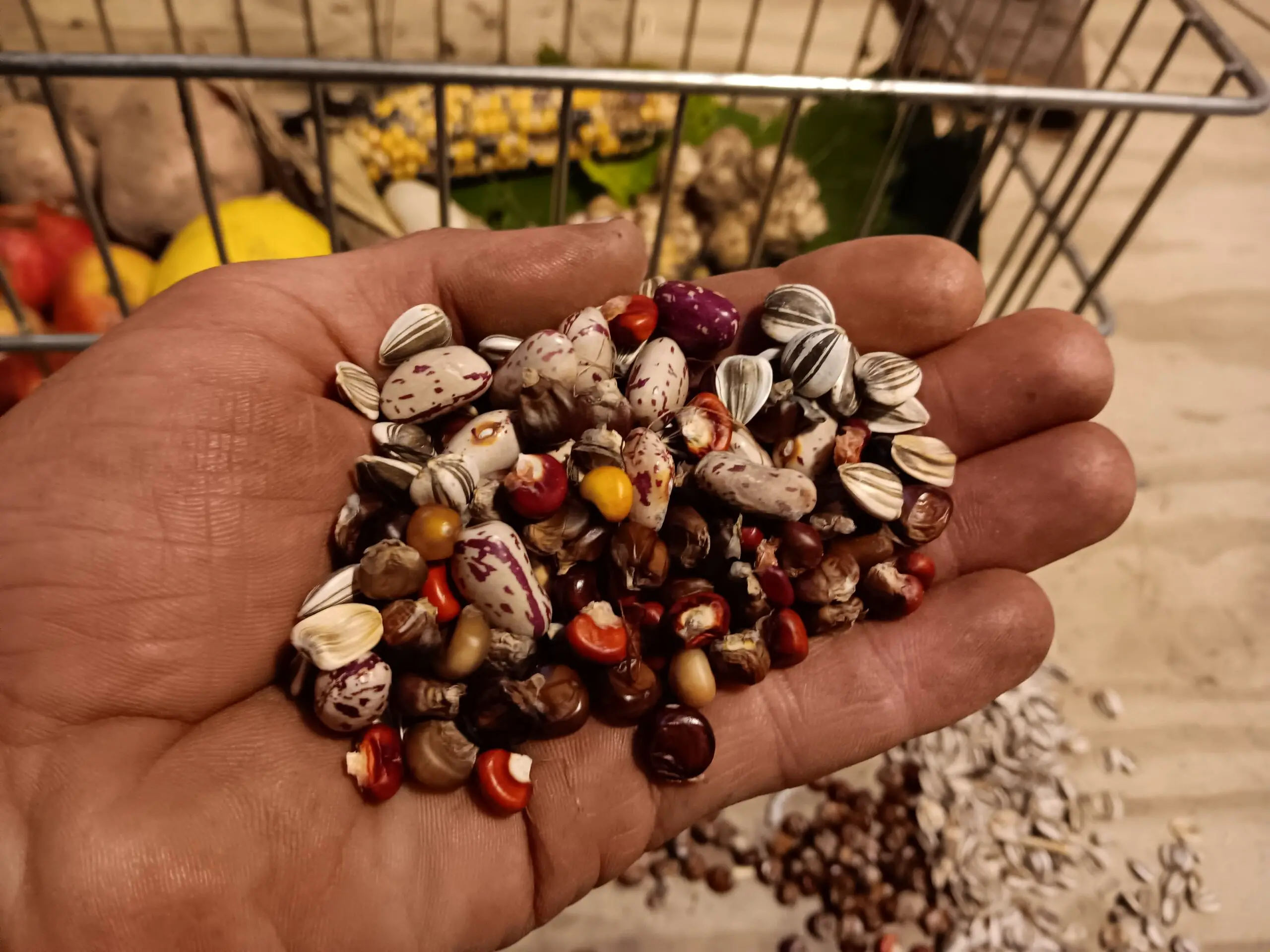Not all poultry treats are good for your chickens. Here are some of the very best you can get.
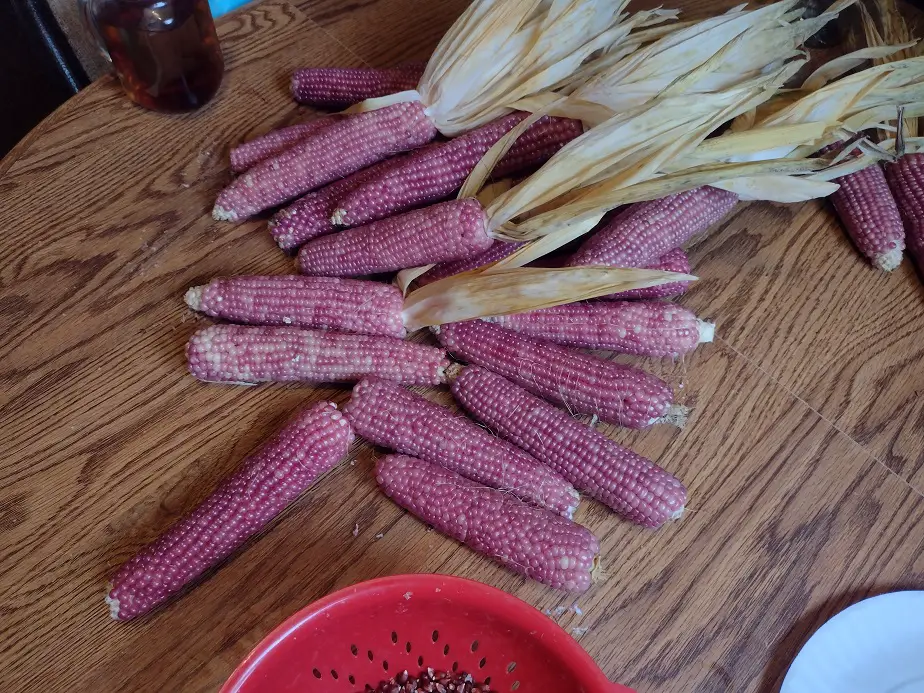
Popcorn (unpopped)
Popcorn is a flint corn. That means it has more protein and harder starch than standard feed corn. The higher protein is nice because regular feed corn (the main ingredient in most chicken feeds) is quite low in protein. Flint corn regularly has between twenty and forty percent more protein than standard feed corn.
Consider it a bonus if you can get red or blue hue popcorn. They are high in anthocyanins which are a very strong antioxidant that improves the overall health and wellbeing of chickens.
The hard starch in flint corn digests more slowly than regular feed corn. It has to pass further in the gut to be broken down. That ends up making the gut more hospitable to beneficial bacteria and less hospitable to problematic ones like E. Coli. It also helps birds to feel more full, preventing overeating.
A popcorn, or any flint corn, is a much better grain than the normal Number 2 Yellow Dent Corn when it comes to older birds, show birds, and ornamental chickens that don’t lay as many eggs. Seriously, so many old hens get incredibly and unhealthily fat due to eating the fast-digesting yellow corn.
Popcorn has a perfectly sized grain kernel for chickens and is particularly handy for juveniles and bantam (dwarf) breeds. The hard kernel even acts as extra grit as it’s broken down in the gizzard.
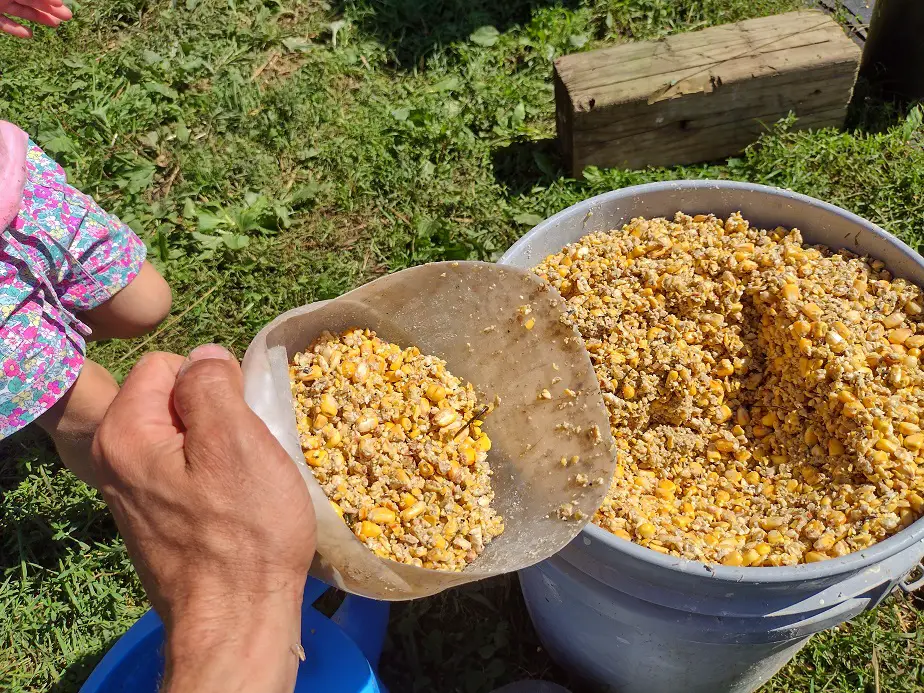
Lacto-Fermented Corn
Lacto-fermented corn is one of the very best treats for your chickens. All it is, is corn soaked in water for 24-72 hours until it gets a little bubbly. Fermented corn is considered one of the most functional bioactive probiotic treats you can give poultry. And, they love it!
The fermented corn becomes high in both lactic acid bacteria and other acid-producing bacteria. The lactic acid bacteria, also called lactobacillus, are the most beneficial group of gut flora for chickens. They improve the uptake of nutrients, reduce E. Coli and salmonella, and boost the immune system.
Fermented grain slightly lowers the pH of the gut, further reducing harmful bacteria outbreaks including coccidiosis, and helps manage intestinal parasites.
Fermented corn has been clinically shown to improve health, increase egg production, and lessen the stress of chickens.
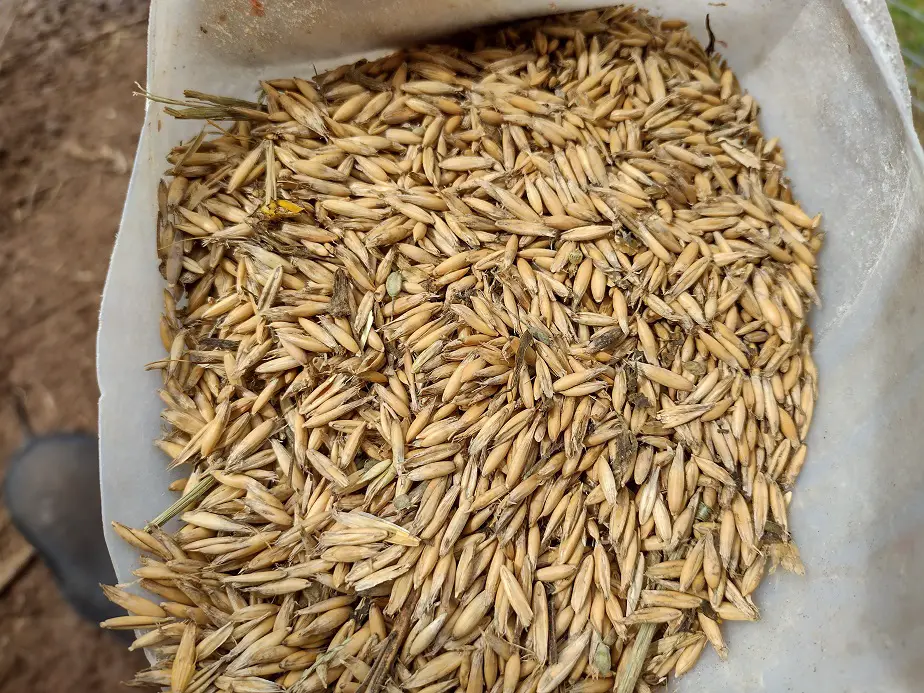
Groats
Groats are just whole oats with the fibrous husk still attached. They are high in protein and in fiber, and contain moderate amounts of tannic acids. The fiber benefits chickens’ digestive tracts. The biggest thing groats do is benefit gut health and help older birds not over-indulge.
Groats have fewer calories than normal chicken feed. It also has about 40-50 percent more protein and three times the fiber of feed corn. The fiber boosts gut-health, which greatly reduces the impact of common disease outbreaks among poultry.
I like to ferment groats for our chickens, It’s actually a big part of their winter feed ration. They do better with it than without it. Although, they don’t always care much for it.
A little groats added to chicken feed has been shown to increase growth and boost their health.
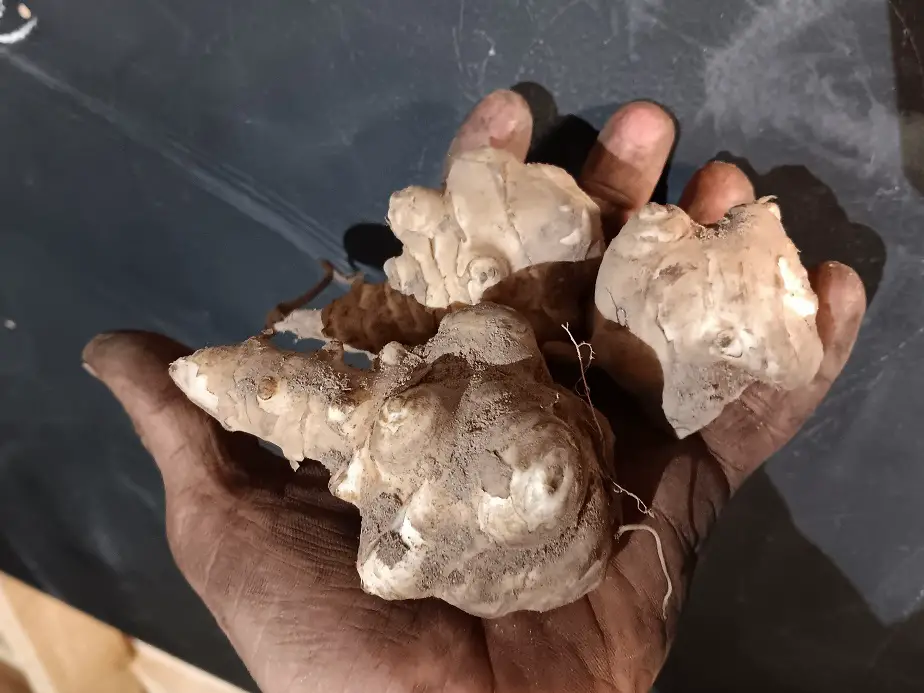
Jerusalem Artichoke
Jerusalem artichoke, also called sunchoke or sunroot, is a powerhouse tuber full of benefits for chickens. It lowers the gut pH, improving health and reducing Salmonella. It causes a significant increase in beneficial gut flora and a matching decrease in harmful ones.
Besides that, it’s high in starch so it does give chickens good energy. I fed many hundreds of pounds of Jerusalem Artichoke to our chickens. Last year I went through several barrels full just in the winter. When fresh, they peck at them and eat them lightly. When dried and pelleted, chickens devour them.
So, you can see here that there’s a theme of improving gut-health of your birds. That’s because it’s important and because most chicken feeds as they are cause gut issues. I have found that fixing the gut is the biggest step to animal health and longevity.
I will always feed these tubers to my birds because it’s just so very beneficial.
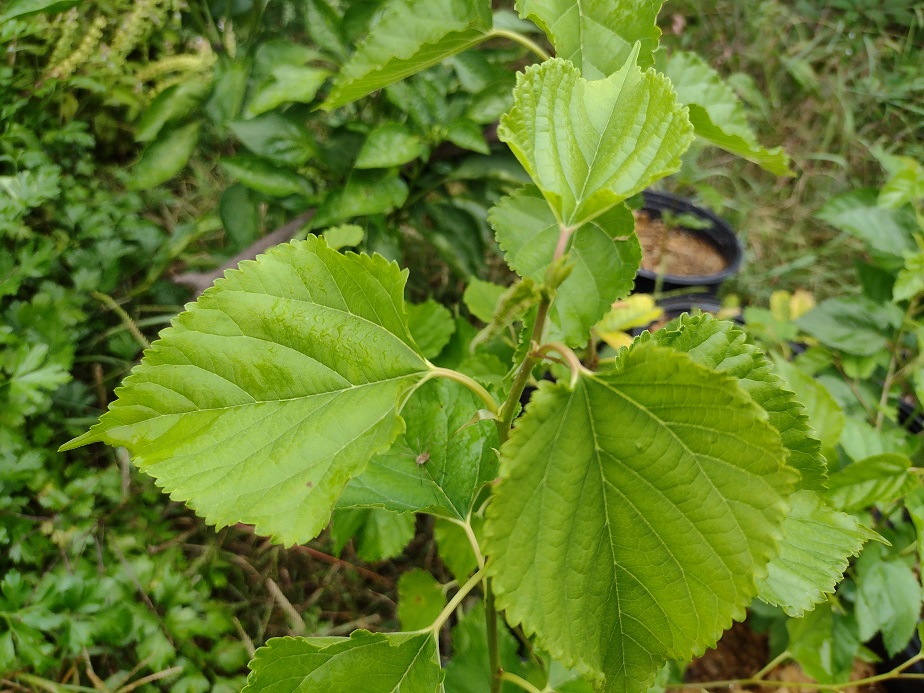
White Mulberry Leaf
White mulberry leaf Is one of my secret feed ingredients and an awesome additive to a chicken’s diet. As an occasional treat, the fiber in white mulberry reduces the likelihood of a salmonella outbreak, as well as significantly reducing other potential illness-causing bacteria.
White mulberry leaf is incredibly high in antioxidants (mostly from chlorophyll) that have been shown to increase the life and productive egg-laying span of chickens. It’s also extremely high in protein. Sometimes it can get up to 30 percent protein and it has about 0.5% lysine, which is pretty high.
White mulberry leaf has been shown to improve the gains of meat chickens, increase the average eggs laid per year among production hens, and increase the lifespan of pet chickens. What’s not to love?
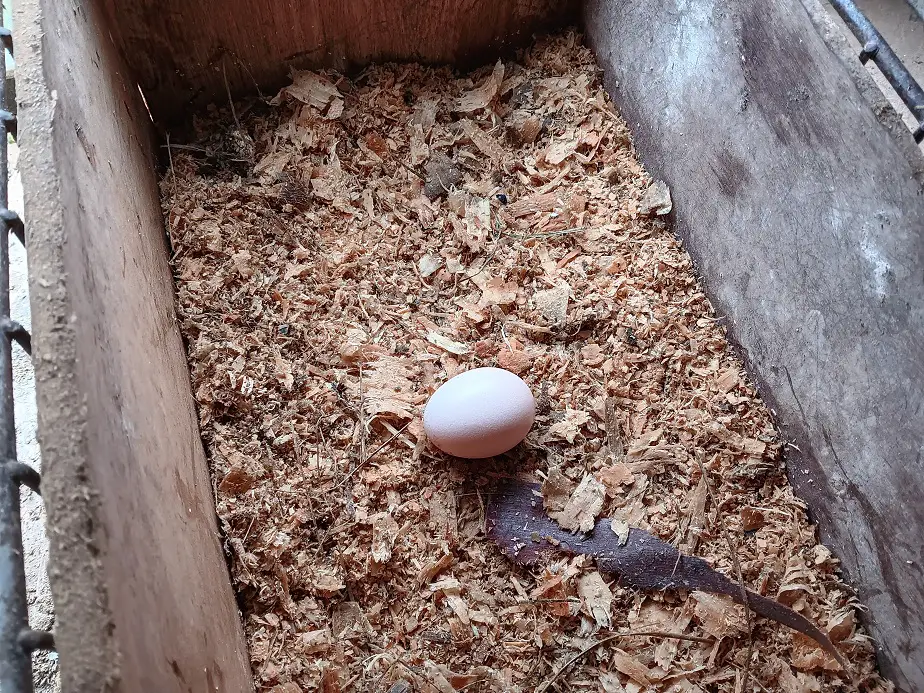
Alfalfa Pellets
Alfalfa is high in vitamins A and E and in essential minerals like calcium, zinc, iron, and magnesium. It’s also 18 to 22 percent protein and has decent levels of lysine. Lysine is the most needed amino acid for poultry and most treats don’t contain any. Alfalfa does.
Alfalfa is also beneficial to the gut and to the immune system. It really is part of a healthy diet and I think it ought to be included in small amounts in most poultry feed because it makes chickens healthier. I wouldn’t go too heavy on alfalfa because it is low-calorie, but as an occasional treat, it’s a winner.
You can buy alfalfa pellets at most any farm supply store, or anywhere that sells rabbit/horse feed. It’s not usually sold for use with chickens, but it’s very good for them. Especially if you keep your chickens contained and they don’t get out to peck at green plants on their own.
I have personally watched alfalfa increase our egg production when added to the hens’ diet as a treat.
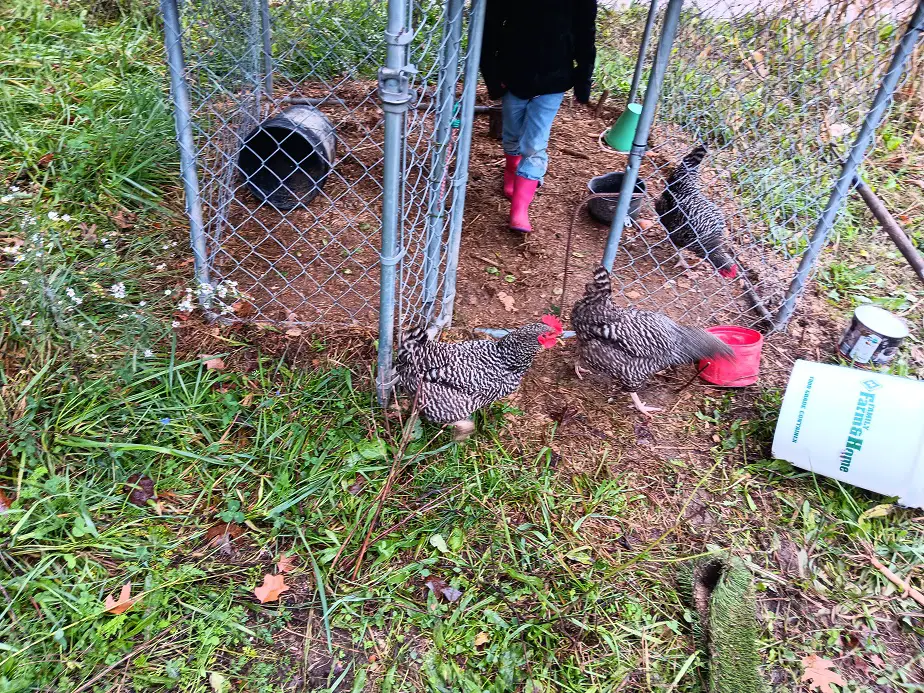
Kitchen Scraps
Kitchen scraps are a great way to reduce your waste and to give your flock an appreciated treat. Chickens can have anything you could eat. So old leftovers, veggie peels, apple cores, or whatever you have around that you don’t want to eat yourself can go to the chickens.
There isn’t any standard food or food ingredient that chickens shouldn’t have. I would avoid giving them anything that’s highly salted, but I would also advise that you don’t eat a ton of salt either. chickens can also eat food that’s started to spoil, as long as it’s not horridly rancid.
Things that sat out too long or that have a slight off-smell are all fine for chickens. We keep a scrap bowl on the counter and bring it out to the chickens each morning. It can be up to 30 percent of their diet without worrying too much if they’re eating right.
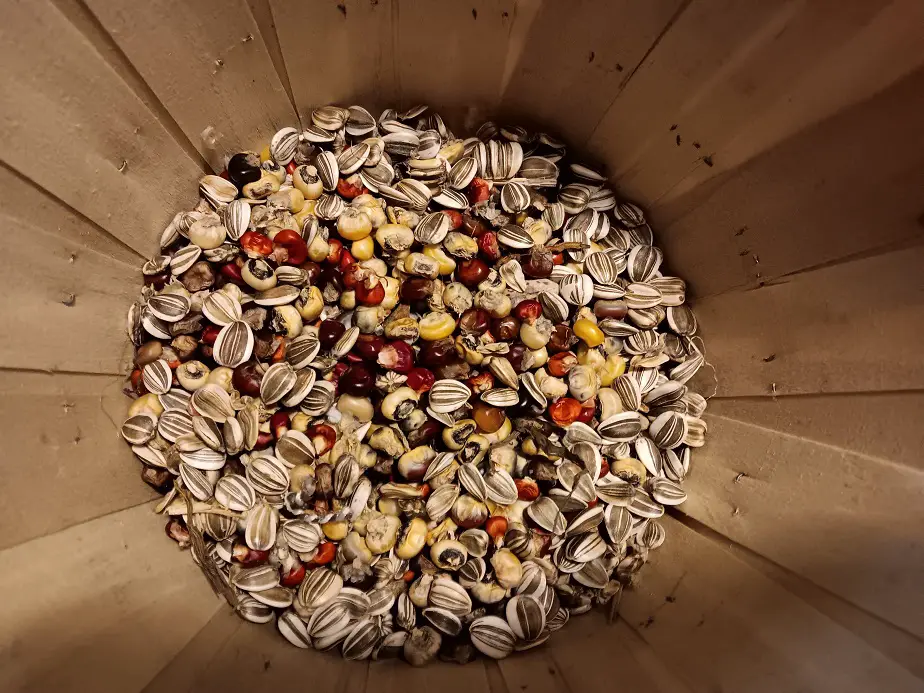
Sunflower seed
Sunflower seed helps chickens keep a nice, colorful coat of feathers, and they love it. Sunflower seed, like the kind used for birdseed, is full of beneficial oils, had a decent amount of protein, and has a lot of lysine. Sunflower seeds are commonly used to improve the look of feathers for chicken shows.
Sunflower oil is full of Vitamin E, and it is quite high in antioxidants. The seeds are also high in magnesium, which improves the quality of eggshells. Sunflower seed is another one of those ingredients that ought to be included in chicken feed.
They are well-known among chicken farmers to increase egg production and quality even when only fed in very small quantities. Another one of my secrets. I grow a lot of sunflowers just so my chickens can eat the seeds. It’s an important part of their winter feed.
Because they are 30 to 40 percent oil, sunflower seeds really boost up the energy content of the feed, which is amazing here in the northern frigid climate.
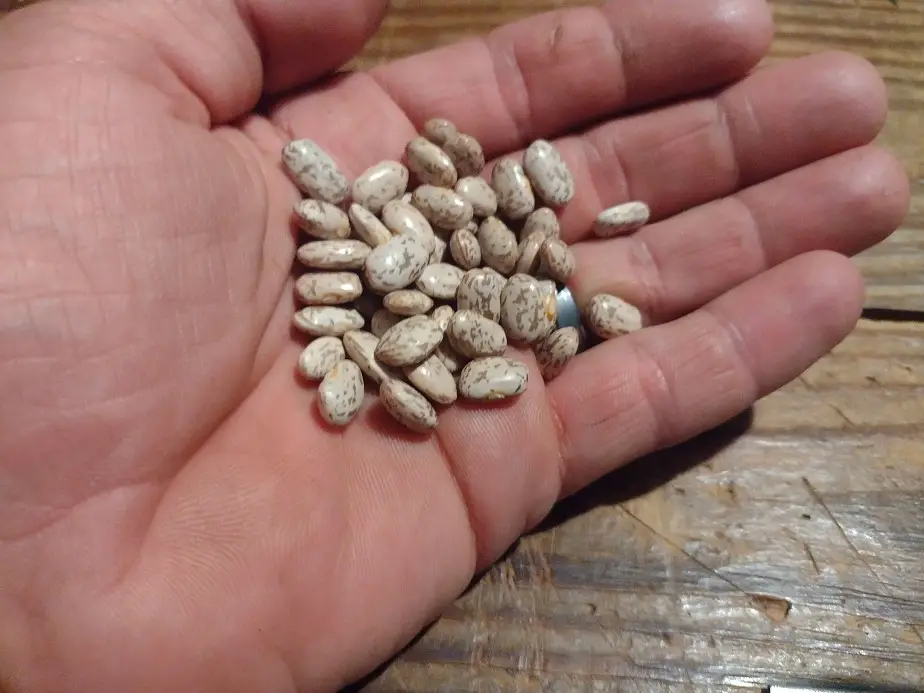
Common Bean
Common bean is the name for all regular shelled beans. Things like black beans, pinto beans, and kidney beans are examples of common bean. These beans are all about 25 percent protein and are about 60 percent carbs, but are somewhat low in fats and oils.
Beans are great for additional protein in a chicken’s diet, but uncooked beans should be kept to around 1/10th of he total diet. So they’re fine as a treat, but not as a primary feed ingredient unless they are either fermented or cooked one way or another. Commercially, they are usually either roasted or steamed.
Raw dry beans are fine, just go light on them. Too much can give chickens a belly ache.
Black Soldier Fly Larvae (usually dried)
Black Soldier Fly larvae are incredibly high in protein and fairly high in calcium. They’re also high in Omega-3 fatty acids. That means they help chickens to lay more healthful, more nutritious eggs. Besides the fact that chickens love the larva, They make the eggs higher in good cholesterol and even lessen the burden of laying eggs.
The extra calcium helps maintain the integrity of a chicken’s skeleton system while they are laying eggs. It takes a lot of calcium to make a proper eggshell every day. That can end up directing away calcium from going to strengthen bones.
Anything with a lot of calcium lessens the potential stress of a weakened bone structure. It’s always good to add a little extra calcium now and then. They can be a bit expensive, but dried Black Soldier Fly larvae are definitely the choice of discrimanate chickens. They simply can’t resist.
Related Articles:
- Can Chickens Eat Sweet Feed?
- Biochar for Chickens (benefits, uses, and methods)
- Scratch Grain vs Cracked Corn for Chickens
- Best Grain for Chicken Feed (5 awesome options)

